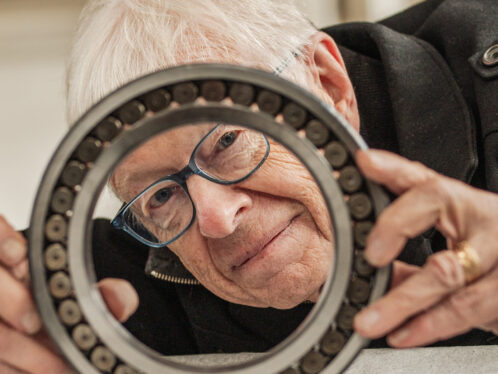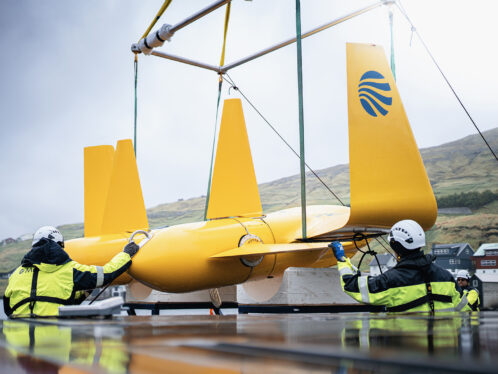
Long-term relationships
Summary
Bearings behind the motors
SKF is the largest supplier of bearings to the Bosch plant in Bühl. Most of these bearings are used in motors for windshield wipers, cooling fans, auxiliary water pumps and ABS braking systems. The Bühl factory normally uses about 28 million bearings annually; worldwide, Bosch has a demand for more than 150 million pieces.
But the numbers are only part of the story. Other behind-the-scenes aspects of the companies’ mutual activities include development of specialised bearings for special applications, which is done with close communication between the R&D departments at SKF and at Bosch. Rigorous testing of every new design is a must, to meet Bosch’s “zero defects” goal.
Bosch’s long-term business relationship model helps smooth out the highs and lows of business cycles, making the business climate more predictable and improving long-term market share.To keep products moving out to customers, one must keep parts for those products coming in from suppliers. In fluid market conditions, a business must take the long view and develop long-term, stable relationships with its suppliers so it can be a stable supplier to its customers. This requires a solid, intelligent, well-planned purchasing strategy.
Alfons Lesch, purchase director, and Udo Breitwieser, section manager of purchasing at Bosch Body Electronics Division, have been down this road before. At the company’s main production plant in Bühl, Germany, their buying decisions help keep the factory’s 3,700 workers busily producing small electric motors for automakers around the world. These motors then turn up in everything from cooling-system motors to electric windows, rear-view mirrors, sunroofs, windshield wipers, heating and air conditioning and power seats.
Bosch produces some 500,000 small motors every day, of which half come out of the Bühl plant. These represent some 1,000 different products, including 300 types of window motors for various car models. The purchasing department deals with 7,000 different part numbers. Altogether, says Breitwieser, 1,200 freight pallets of products leave the factory daily.
To keep producing all those products, the plant needs a steady stream of parts. And that’s where Lesch and Breitwieser go to work. Speaking from the conference room just down the hall from their offices at the Bühl plant, they describe the symbiotic relationship between supplier and customer.
The long view
“Our purchasing strategy is not to jump day-by-day to the supplier who has the best price,” says Lesch. “Our policy is that we want a long-term relationship with our suppliers.” He notes that the market changes quickly. For the past two years (2000 and 2001) it has been a seller’s market, but now it’s become a buyer’s market.
Bearings went through a similar cycle in the late 1980s and early ’90s. Paul-Gerhard Hoch, sales and marketing manager at SKF, recalls that time. “At the end of the ’80s, bearings were in short supply,” says Hoch. “It was really tough to meet customer requests. But at the beginning of the ’90s a recession started that lasted about three years. There was a lot of pressure on everybody.”
Lesch describes what happened. “Delivery times for bearings were 10 to 15 months. Many customers reasoned ‘I only need 100, but I’ll order 200.’ And because the bearings were in short supply, the manufacturers said ‘I’ll only give 50 percent to each customer.’ So the customers all overbooked.
Suddenly the recession came, and they all stopped ordering. The sales people were all getting cancellations.” He says that their long-term business relationship model allows Bosch to do things differently.
“We work with true figures in both the seller’s market and the buyer’s market,” Lesch continues. “With our long-term suppliers this works. Even in times like the past two years in the electronics market, we didn’t have problems because our suppliers served us. That’s important.”
Long-term business relationships allow companies to smooth out the highs and lows of business cycles, making the business climate more predictable and helping produce mutual orderly growth. This philosophy is not just a good defensive move. Perhaps even more importantly, it allows the companies to use difficult times to their strategic advantage at the expense of their competition. The fact that their long-term relationships produce a stable supply of components even during business downturns means Bosch can be a stable source of supplies to its automotive customers.
“It’s important for us to be a stable supplier to our customers,” says Lesch. “In 2001 there were shortages of plastic and specialised steel in the market. Because of the weak euro, Americans and other members of North American Free Trade Agreement (NAFTA) bought steel and plastics in Europe. Compared with paying with yen or dollars, Europe was cheap at this time. Therefore, the market was very short. Some of our competitors in body electronics had problems serving their customers. We also had problems, but due to our strategy of long-term relationships with our suppliers, there was never a single case when one of our customers didn’t get the quantity he needed. It was tough, but there was never a situation where we couldn’t deliver to one of our customers. During this time our competitors had a lot of problems.”
The emphasis on long-term relationships gave Bosch a competitive advantage that allowed the company to take market share away from the competition during a downturn. The purchasing department uses this philosophy as a business strategy, in keeping with the policy throughout the company.
So how does the relationship work? Lesch explains : “In the market we are a first-tier supplier. And in some cases we’re also at the second or third tier, where we deliver our products to other suppliers who deliver directly to OEMs. The lower you are in these levels, the more difficult it is to get the right figures because the ones who deliver directly to the automobile industry decide very late which supplier gets their order. SKF is one step lower in the process. When we get a decision from our customer, we decide even later [than the body electronics suppliers] whom we give the bearing contract to.”
More small motors
And what of the future? For one thing, as a general trend, the average number of small motors in cars is increasing. Today, the average number per car in Brazil is about four. In Europe, it is about 20. The current maximum on the market (late 2001) is the Mercedes S Class, which weighs in with 95. But that includes seats with cooling fans.
“In the future there will be a very interesting market for the seats,” says Lesch. “Very few seats have motors. You can build roughly eight or nine motors into a seat. One to go forward and backward, one for up and down; then there’s the headrest. You can have a massage-type movement in the seat to keep the driver awake and relaxed. But at the moment, you only have those motors in high-end cars. It takes time to bring them also to middle-class cars.”
Another market awaiting expansion is that for electric windows. “In Europe,” Lesch says, “we have a market penetration of about 80 percent.” Now the automakers have programmes to increase sales. For example, for a low [additional] price, you can now get electric windows in practically all cars.
And as for the business strategy that has brought them this far, Breitwieser says, “We would like to carry on the long-term relationship with our suppliers, so that we can grow together with our customers. It’s a partnership.”
Jim McDonald
a freelance writer based in Frankfurt, Germany
photo Bosch and DaimlerChrysler




